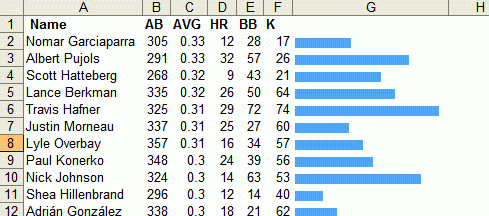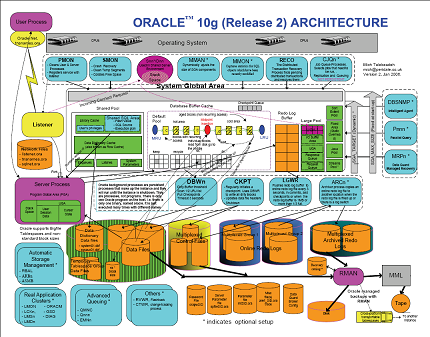root@rffmora01:~# format
Searching for disks...done
AVAILABLE DISK SELECTIONS:
0. c1t0d0 <VMware-Virtual disk-2.0-24.00GB>
/pci@0,0/pci15ad,1976@10/sd@0,0
1. c1t1d0 <VMware-Virtual disk-2.0-32.00GB>
/pci@0,0/pci15ad,1976@10/sd@1,0
2. c1t2d0 <VMware-Virtual disk-2.0-32.00GB>
/pci@0,0/pci15ad,1976@10/sd@2,0
3. c1t3d0 <VMware-Virtual disk-2.0-32.00GB>
/pci@0,0/pci15ad,1976@10/sd@3,0
Specify disk (enter its number): 1
selecting c1t1d0 <VMware-Virtual disk-2.0 cyl 4175 alt 2 hd 255 sec 63>
[disk formatted]
No Solaris fdisk partition found.
FORMAT MENU:
disk - select a disk
type - select (define) a disk type
partition - select (define) a partition table
current - describe the current disk
format - format and analyze the disk
fdisk - run the fdisk program
repair - repair a defective sector
label - write label to the disk
analyze - surface analysis
defect - defect list management
backup - search for backup labels
verify - read and display labels
inquiry - show disk ID
volname - set 8-character volume name
!<cmd> - execute <cmd>, then return
quit
format> fdisk
No fdisk table exists. The default partition for the disk is:
a 100% "SOLARIS System" partition
Type "y" to accept the default partition, otherwise type "n" to edit the
partition table.
y
format> label
Ready to label disk, continue? y
format> verify
Primary label contents:
Volume name = < >
ascii name = <DEFAULT cyl 4174 alt 2 hd 255 sec 63 cyl 4174 alt 2 hd 255 sec 63>
pcyl = 4176
ncyl = 4174
acyl = 2
bcyl = 0
nhead = 255
nsect = 63
Part Tag Flag Cylinders Size Blocks
0 unassigned wm 0 0 (0/0/0) 0
1 unassigned wm 0 0 (0/0/0) 0
2 backup wu 0 - 4173 31.97GB (4174/0/0) 67055310
3 unassigned wm 0 0 (0/0/0) 0
4 unassigned wm 0 0 (0/0/0) 0
5 unassigned wm 0 0 (0/0/0) 0
6 unassigned wm 0 0 (0/0/0) 0
7 unassigned wm 0 0 (0/0/0) 0
8 boot wu 0 - 0 7.84MB (1/0/0) 16065
9 unassigned wm 0 0 (0/0/0) 0
format> quit
root@rffmora01:~# format
Searching for disks...done
AVAILABLE DISK SELECTIONS:
0. c1t0d0 <VMware-Virtual disk-2.0-24.00GB>
/pci@0,0/pci15ad,1976@10/sd@0,0
1. c1t1d0 <VMware-Virtual disk-2.0-32.00GB>
/pci@0,0/pci15ad,1976@10/sd@1,0
2. c1t2d0 <VMware-Virtual disk-2.0-32.00GB>
/pci@0,0/pci15ad,1976@10/sd@2,0
3. c1t3d0 <VMware-Virtual disk-2.0-32.00GB>
/pci@0,0/pci15ad,1976@10/sd@3,0
Specify disk (enter its number): 1
selecting c1t1d0 <VMware-Virtual disk-2.0 cyl 4174 alt 2 hd 255 sec 63>
[disk formatted]
FORMAT MENU:
disk - select a disk
type - select (define) a disk type
partition - select (define) a partition table
current - describe the current disk
format - format and analyze the disk
fdisk - run the fdisk program
repair - repair a defective sector
label - write label to the disk
analyze - surface analysis
defect - defect list management
backup - search for backup labels
verify - read and display labels
inquiry - show disk ID
volname - set 8-character volume name
!<cmd> - execute <cmd>, then return
quit
format> partition
PARTITION MENU:
0 - change `0' partition
1 - change `1' partition
2 - change `2' partition
3 - change `3' partition
4 - change `4' partition
5 - change `5' partition
6 - change `6' partition
7 - change `7' partition
select - select a predefined table
modify - modify a predefined partition table
name - name the current table
print - display the current table
label - write partition map and label to the disk
!<cmd> - execute <cmd>, then return
quit
partition> print
Current partition table (original):
Total disk cylinders available: 4174 + 2 (reserved cylinders)
Part Tag Flag Cylinders Size Blocks
0 unassigned wm 0 0 (0/0/0) 0
1 unassigned wm 0 0 (0/0/0) 0
2 backup wu 0 - 4173 31.97GB (4174/0/0) 67055310
3 unassigned wm 0 0 (0/0/0) 0
4 unassigned wm 0 0 (0/0/0) 0
5 unassigned wm 0 0 (0/0/0) 0
6 unassigned wm 0 0 (0/0/0) 0
7 unassigned wm 0 0 (0/0/0) 0
8 boot wu 0 - 0 7.84MB (1/0/0) 16065
9 unassigned wm 0 0 (0/0/0) 0
partition> quit
format> quit
root@rffmora01:~# prtvtoc /dev/rdsk/c1t1d0s0
* /dev/rdsk/c1t1d0s0 partition map
*
* Dimensions:
* 512 bytes/sector
* 63 sectors/track
* 255 tracks/cylinder
* 16065 sectors/cylinder
* 4176 cylinders
* 4174 accessible cylinders
*
* Flags:
* 1: unmountable
* 10: read-only
*
* Unallocated space:
* First Sector Last
* Sector Count Sector
* 16065 67039245 67055309
*
* First Sector Last
* Partition Tag Flags Sector Count Sector Mount Directory
2 5 01 0 67055310 67055309
8 1 01 0 16065 16064
root@rffmora01:~# newfs /dev/rdsk/c1t1d0s2
newfs: construct a new file system /dev/rdsk/c1t1d0s2: (y/n)? y
Warning: 306 sector(s) in last cylinder unallocated
/dev/rdsk/c1t1d0s2: 67055310 sectors in 10914 cylinders of 48 tracks, 128 sectors
32741.9MB in 683 cyl groups (16 c/g, 48.00MB/g, 5824 i/g)
super-block backups (for fsck -F ufs -o b=#) at:
32, 98464, 196896, 295328, 393760, 492192, 590624, 689056, 787488, 885920,
Initializing cylinder groups:
.............
super-block backups for last 10 cylinder groups at:
66162848, 66261280, 66359712, 66458144, 66556576, 66655008, 66753440,
66851872, 66950304, 67048736
root@rffmora01:/ora# mount /dev/dsk/c1t1d0s2 /ora/product
root@rffmora01:/ora# cat /etc/vfstab
#device device mount FS fsck mount mount
#to mount to fsck point type pass at boot options
#
# START Informational entries for filesystems mounted by the kernel
#/devices - /devices devfs - no -
#/proc - /proc proc - no -
#ctfs - /system/contract ctfs - no -
#objfs - /system/object objfs - no -
#sharefs - /etc/dfs/sharetab sharefs - no -
#fd - /dev/fd fd - no -
#swap - /tmp tmpfs - yes -
# END Informational entries for filesystems mounted by the kernel
/dev/zvol/dsk/rpool/swap - - swap - no -
/dev/dsk/c1t1d0s2 - /ora/product ufs - yes -



